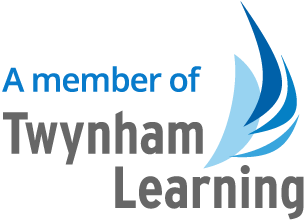Art
Through our teaching we aim to inspire and encourage our students as creative artists by developing their visual awareness and visual communication skills.
We aim to provide students with transferable skills of experimentation, reflection, evaluation and problem solving, whilst developing their powers of observation.
We encourage collaboration and students will share thoughts and ideas whilst learning to respect and understand alternate opinions and points of view.
As individuals we hope to encourage self-expression, perseverance and innovation and to inspire students to explore the many ways through art, that we can see and interpret the world around us.
Curriculum Information
Key Stage 3
Year 7
We begin with exploring the environment around us and recording experiences through experimental mark-making. We study the work of historical and contemporary artists including Vincent Van Gogh. We then study drawing techniques using a range of monochromatic media, focusing initially on the use of line. We move on to nature in the imaginary world, communicating narratives through drawing and imaginative use of pattern. We complete the year with an investigation into nature at a macro level with colourful study of insects, the installation art of Alan Bur Johnson, colour theory and mixed media processes.
Year 8
We start the year with a study of the work of Chris Ryniak, drawing contemporary monsters, gaining an understanding of the artists work and processes and investigating design ideas including collage and drawing. This leads to creative design work and culminating in the design and making of a clay monster. This is followed by a relief printmaking process, where we design and create a collagraph based on the local coastal environment, investigating surface texture and composition.
Year 9
We begin the year with a study of portraiture, learning about tone, tonal range, contrast and proportion whilst studying portraiture throughout history. We then study a carefully curated range of artists including Frida Kahlo, Yayoi Kusama, Andy Warhol and Salvador Dali and the varied meanings, messages and concepts in their work. Looking at the contemporary portraits by the artist Loui Jover, we create work inspired by the idea of looking inside the mind of the artist, using mixed media and collage processes. We follow this with a contrasting study of architectural decay including the work of Ian Murphy, in monochromatic textured studies.
Key Stage 4 Options Information
| Exam board: OCR |
What is it like to study Art at GCSE? |
| Qualification: GCSE in Art & Design | |
| Specification: OCR GCSE Art | |
|
Assessment: You will submit two components - for each of these you need to produce a portfolio of work showing your personal response to either a starting point, brief, scenario, or stimulus. Both components allow for experimentation with a range of media including painting, drawing, print-making, sculpture and digital processes. You are expected to respond to the assessment objectives, showing your ability to: • Develop ideas through investigations, demonstrating critical understanding of sources |
|
|
Who is the course for? This course would suit creative students who have enjoyed art at Key Stage 3 and have shown a sustained interest in the subject. In particular this means you have taken opportunities to: You should be able to organise your work and materials and have a good track record of successfully completing homework as this will form a key part of your development. You should be willing to spend additional time on your work and attend workshops. You will be highly suited to this course if you are creatively ambitious and engage in additional art practise at home through drawing, experimenting or practising new techniques. This course is suitable for those students who wish to further their art education and study a creative subject at A Level, and for those who are aiming for a career in the arts. Arts education can also support the development of skills and ways of working that will benefit you in the future, in whatever career you choose. This includes but it not limited to; developing your creative thinking, independence, time management, determination and resilience. |
|
|
What will I do on the course? GCSE Art encourages you to develop your creativity with increasing independence, developing personal responses to a range of stimulating themes. Through periods of exploratory workshop-based learning, you are introduced to specialist ways of working, media, techniques, material and processes. As the course progresses you reflect in more detail on your strengths and interests as an artist. Through assessed work, you are required to make more personal decisions about project development with independent research playing a vital role in project-based work. You will develop a more in-depth knowledge of creative working practice, studying the work of a range of contemporary and historical artists. You will develop your evaluative skills, analysing artwork and making meaningful connections with the work of others, gaining inspiration from your artist studies. You will develop your use of visual language to communicate your ideas and create a personal response to a chosen theme. |
|
|
Unit Breakdown OCR GCSE in art and design Fine Art (J171) Component 1: Portfolio (120 marks, 60% of total GCSE) Component 2: Externally Set Task (80 marks, 40% of total GCSE) Both components are non-examined assessment (internally assessed and externally moderated). |
|


